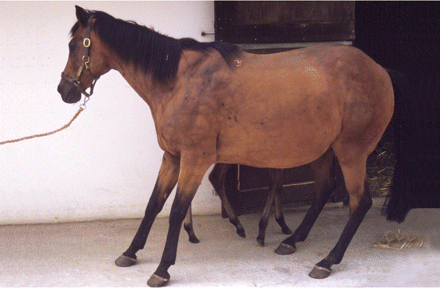Prospective cohort study evaluating risk factors for the development of pasture-associated laminitis in the United Kingdom
J. Menzies-Gow, P. A. Harris and J. Elliott
This prospective cohort study set out to evaluate risk factors influencing the development of pasture-associated laminitis in ponies, prior to disease occurrence. 446 non-laminitic ponies aged 10-20 years were included, with an approximately equal number of mares and geldings. Breeds included Welsh, Shetland, cob and crossbreeds. At the start of the study, weight, body condition score and crest measurements were recorded and an overnight dexamethasone suppression test (DST) was performed.
Venous concentrations of the following mediators measured: plasma adiponectin, leptin, serum insulin, several insulin-like growth factors, C-reactive protein, p-selectin, sE-selectin and plasma triglycerides. Owners were contacted on an annual basis for 3 years to determine whether pasture-associated laminitis had been diagnosed by their veterinary surgeon in the last 12 months.
On initial examination, 73% were overweight or obese and 0.5% were underweight (0.5%). After 1 year, 4% had developed pasture-associated laminitis. After 2 years, this had increased to 6.7% and after 3 years to 9.9%. After 3 years, the factors which had emerged from statistical analysis as significant risk factors for laminitis were low plasma adiponectin, high basal insulin and high insulin post-dexamethasone. No statistically significant associations were found with the other mediators or with plasma triglyceride levels. None of the morphometric measures proved to be associated with laminitis.
The finding that low plasma adiponectin is present in ponies prior to the onset of signs of laminitis indicates that this may be a risk factor for laminitis as opposed to simply a sign of the disease. Hyperinsulinaemia and insulin dysregulation are already known to be risk factors for the disease. An exaggerated response to exogenous dexamethasone in the DST was associated with an increased risk of laminitis in this study.
The the main limitation of the study was that horses were only subjected to clinical examination and blood tests on one occasion at the study onset, and biomarkers and body condition may have changed considerably in the subsequent 3 years.
Bottom line:
Low plasma adiponectin, high basal insulin and high insulin post- dexamethasone in ponies are factors associated with an increased risk of developing pasture-associated laminitis.
photo: http://www.mitavite.com/
--Ends--


